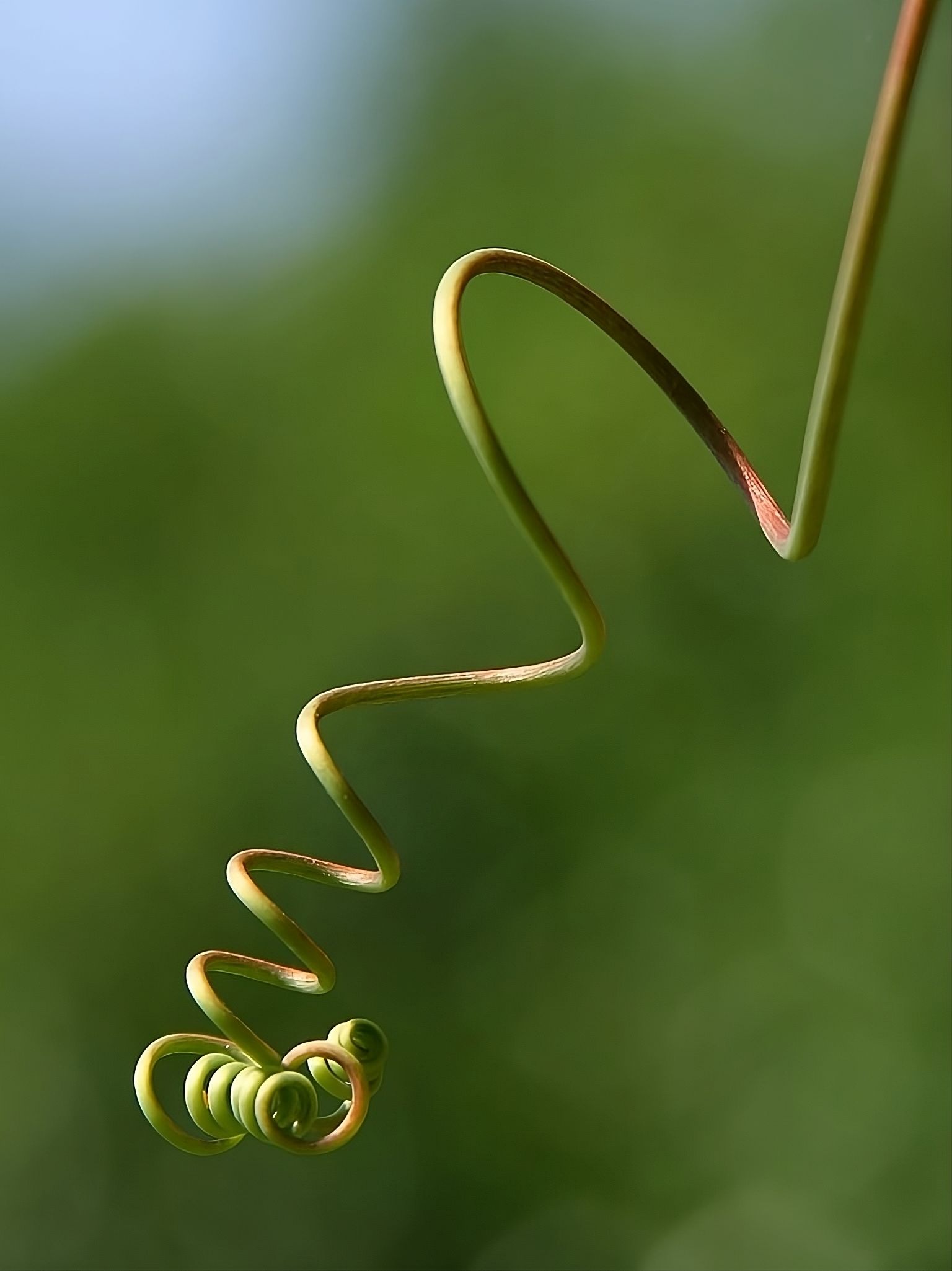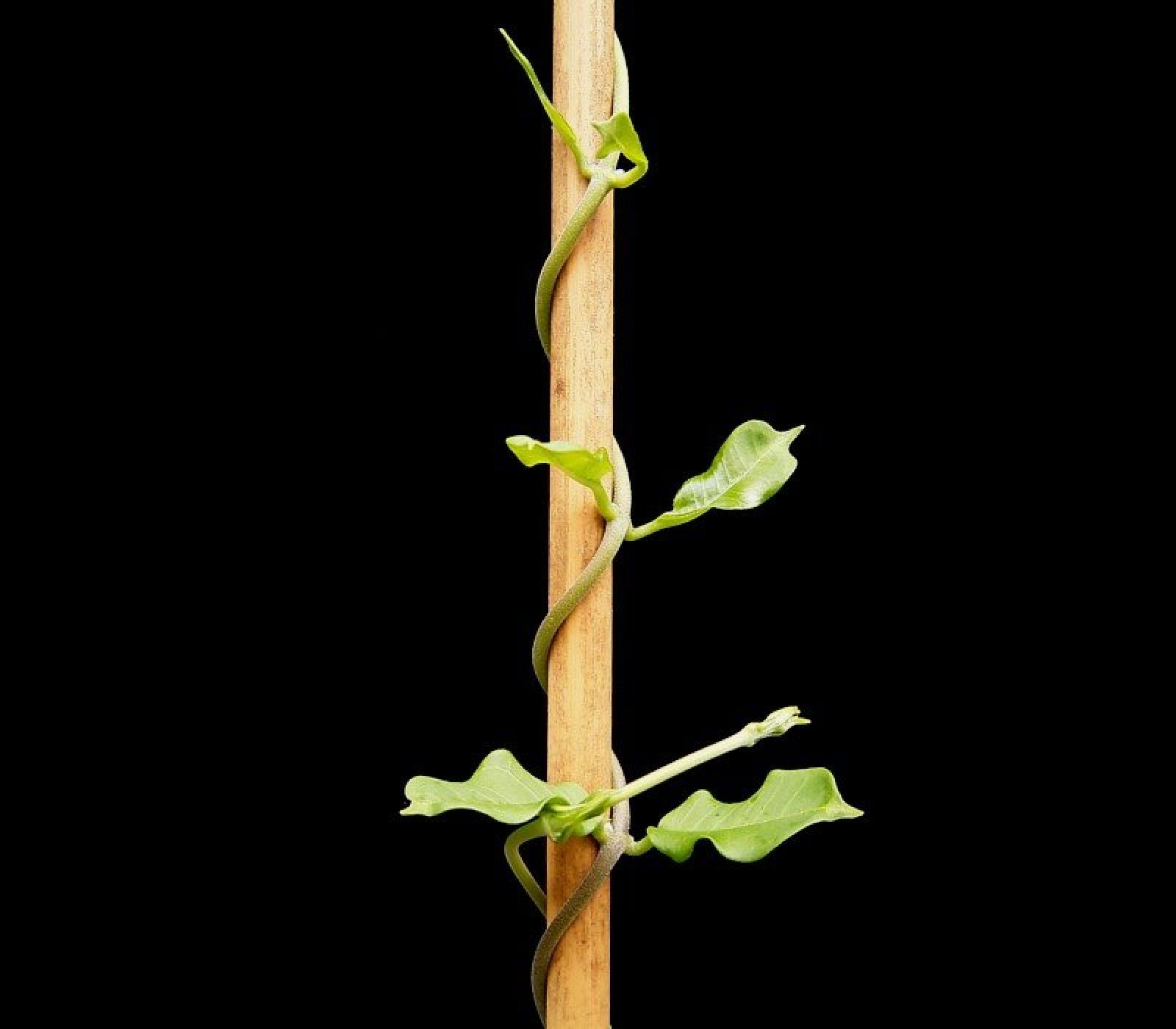Follow us on Google News (click on ☆)
Climbing plants employ different strategies to ascend. Tendrils, for example, are thin, flexible structures that emerge from stems or leaves. They move through the air until they encounter a support, then coil around it to support the plant. Sweet peas and grapevines are common examples of plants using tendrils.

Grapevine tendril - Image Wikimedia
Some climbing plants, like hops and honeysuckle, wind their stems around supports. These stems, often rough or covered in hairs, efficiently spiral around supports. This mechanism is known as "stem twining."
Other plants use adhesive roots to climb. English ivy, for example, develops small roots along its stems that attach to surfaces, allowing the plant to climb even vertical walls. Climbing roses use thorns to latch onto surrounding structures.

Image Wikimedia
To cultivate climbing plants, it's essential to choose the right type of support. Trellises are ideal for plants with tendrils, like sweet peas and grapevines. For plants with twining stems, like beans, sturdy vertical supports such as stakes or taut wires are recommended.
Plants with adhesive roots can climb walls or fences, but care must be taken as they can damage structures by infiltrating cracks.

Ivy on an old wall - Image illustration Unsplash